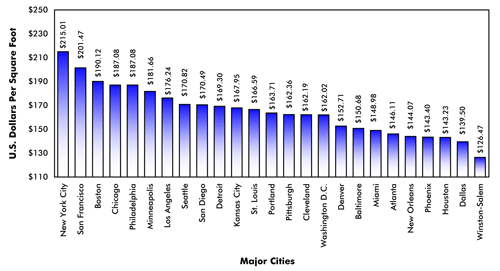A common request with our custom home designs is to make a design that is accessible, especially for a person in a wheelchair or other limited mobility. Clients may be elderly or they have elderly family members or disabled family members who may need a more accessible house. There are a number of options that clients can choose depending on whether they want to make a house fully accessible or some degree of adaptable for a potential need. Many of these design strategies could also be adopted for a remodel depending on budget and existing conditions.
The first area to discuss is levels. Clearly levels are very difficult to navigate where you are mobility impaired so a design should eliminate unnecessary steps and changes in elevation. Exterior doors at the garage, entry and decks can work without a step if they’re properly detailed. If the house has multiple stories then it makes sense to design it where the person with impaired mobility doesn’t have to leave the main level in their everyday routine. If the budget affords it, there a a number of different types of lifts and elevators that can add flexibility. On many of our homes we design stacking closets on each level that could accommodate a future lift if it becomes necessary.
The next area of focus is maneuvering clearances for travel through the home. Generally you’ll want 3′-0″ doors into any area that a wheelchair needs to pass into. In other words, you can use smaller doors at closets where you only need to reach in. You also need to allow sufficent clearances at the pull side and push side of a door, at a minimum 12″ and 18″ is always preferred. Each space that will be entered in a wheelchair also needs a 5′-0″ clear circle to turn around in which has a big impact in closets and bathrooms.
There are several strategies for designing accessible bathrooms. The most obvious is providing lots of grab bars at the tub or shower and the toilet. If this is only a future need then you should plan for the grab bar locations by putting blocking in place during the framing. Accessible bathroom toilets can be ordered that are taller than ordinary toilets. You may also consider a roll in shower with no threshold or a tub with a transfer seat. Remember to put the controls where they can be reached easily. At the sink area you’ll want to take out the cabinets under the sink and make sure that the sink at a comfortable accessible height, no more than 34″. You’ll also need to insulate the pipes for a person who can’t feel the heat in them. Consider rotating the sink where the controls are closer and be sure to choose levers.
The kitchen can also be made accessible. Again, lower the counter height to 34″ at working counter tops and provide knee space underneath. Provide at least 30″x48″ of clear space in front of each appliance. Don’t choose a top mount freezer, look at a side by side instead. Provide enough room to turn around in the work triangle. Remember that dishwashers, refrigerators and ovens open outward so you need enough space for that to happen. Considers an alternate sink design and lever handles that are easier to reach.
Another accommodation is specifically for people who have less gripping ability. Use lever handles at doors instead of knobs and specify door hardware that is easy to operate.
Pay attention to the reach height for people in a wheelchair. Don’t mount switches above 48″ and consider mounting electrical outlets at 24″. The taller mounting height for outlets works well for anyone who is tired of bending over to plug things in. Lower the height on clothes rods to 48″.
Flooring is an important consideration for both people with wheelchairs and other mobility difficulties. You’ll want a surface that’s easy to roll across for wheelchairs and something with good traction for people with less balance.
If the mobility impaired person utilizes a van for transportation the garage should be designed to accomodate the height and clearances that are necessary.
In addition to designing single family homes, EVstudio designs a fair amount of multifamily housing so we have a lot of knowledge on making residences fully accessible. Please feel free to contact us with questions and additional suggestions for making homes more accessible are appreciated in the comments section.








